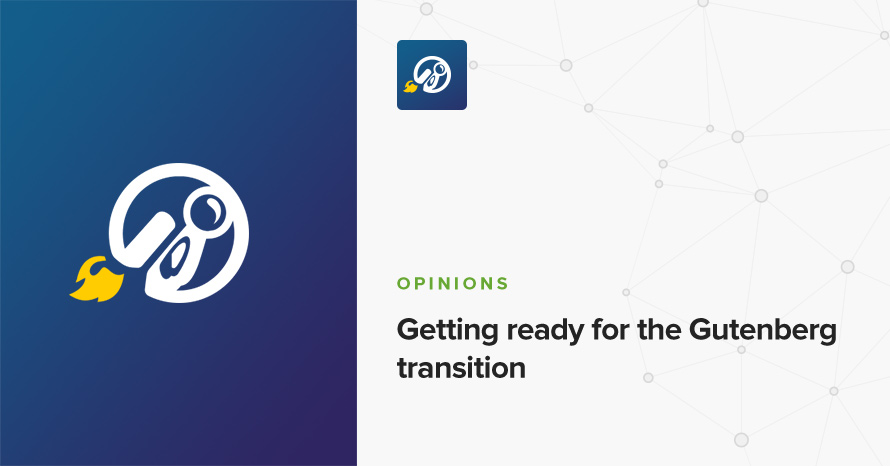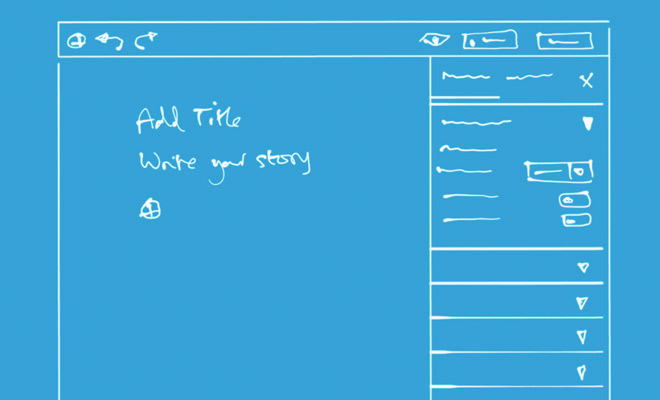Getting ready for the Gutenberg transition

Gutenberg is right around the corner with a speculated release in the second quarter of 2018, but what is Gutenberg? In short it’s the new editor experience for WordPress. The project aims to give you broader, better, and more consistent control on your content, and later, along the way your entire page layouts. The aim, at least at the beginning is to unify all content elements into what are called blocks. In the current editor experience, text, media items, shortcodes, links, offer quite different experiences when creating and customizing them. The introduction of Gutenberg blocks aims to make things more consistent for users that just want to create content without even knowing what a shortcode is.

If you are interested to learn more about the project (as you should because it will be in a WordPress installation near you pretty soon) you can check out the project’s page here.
The classic editor grace period
Upon the arrival of WordPress 5.0, Gutenberg will be the default editor experience, it will replace the default editor. But what if I’m not ready for it, you might say, what if the theme or the plugin’s I’m using are not yet compatible with Gutenberg, what if I don’t have time to train my authors to use Gutenberg properly?
One option is to delay the update to WordPress 5.0, but of course that’s not a good option, along with new features that come with a new release, you will miss out on important security updates, which will make your site vulnerable to attacks. Always update.
There is a solution though. The classic editor plugin is available in the WordPress plugin directory. This plugin will allow you to replace the Gutenberg editor with the old edit post screen until you are ready to hop on Gutenberg. Planned support for this functionality is said to extend to the end of 2018, so there’s plenty of time to test things out and get on board.
Test before you go live
Gutenberg sounds awesome! When can I get it? Well, you can either get it when WordPress 5.0 goes live sometime this year, or you can test it out today using the Gutenberg plugin. If you have the time for the latter option, please do so and make sure you provide your feedback and criticism to the Gutenberg team, this is the best way to ensure that we’ll get a good and functional product down the line.
However, it’s not recommended to just add a plugin with a feature that’s under heavy development to a live site. Nor is updating to WordPress 5.0 when the time comes without testing the waters a bit. Make sure you use a staging staging area to see how your current setup works with Gutenberg. Find a place where you can clone your entire site, install a beta version of WordPress 5.0 and see what happens when you turn the lights on. This will give you an idea of what works and what doesn’t, this way you will have time to fix what you can and communicate other issues to your software vendors so they can help you be ready for the transition. It’s not a very good idea to go into the update unprepared and find out that things don’t work as they did before, it’s an issue easy to avoid.
Talk with your software vendors
The final step you need to take is to talk with your software vendors, both theme and plugin ones. Ask them about their products’ support regarding Gutenberg and their update roadmap.
Gutenberg is planned to be theme agnostic, so transitioning should be smoother when it comes to themes. However plugins are a different story, especially if you are working with plugins that extend the edit post page, such as plugins that add custom fields and metaboxes, custom post types, etc.
What can you do about it? Don’t just ask what is being done regarding Gutenberg, make sure to provide some valuable feedback. As mentioned above you can easily get a staging site and test your installation before the official release. If you notice any problems make sure to communicate them to your theme and plugin authors, this way they will be able to iron out any issues with Gutenberg, things that they might have missed. The more testers we have for our products, the more feedback we can get for them and in turn make them better by fixing the problem. Help us help you and be ready for a major change on the way we create content with WordPress.
Welcome to the Gutenberg era!
3 responses to “Getting ready for the Gutenberg transition”
The realworld step:
Existing projects with customized editor (own Shortcodes, own Metaboxes, complex ACF etc.) will stay at 4.9.x forever…
This is a very real possibility, however every WordPress user must strive to avoid this due to the security risks involved. Old and outdated installations are becoming more vulnerable with each day that passes.
Don’t worry, 4.9.x will get security updates for quite a while, even 3.9.x still gets them, latest update 3.9.23 16.01.2018.